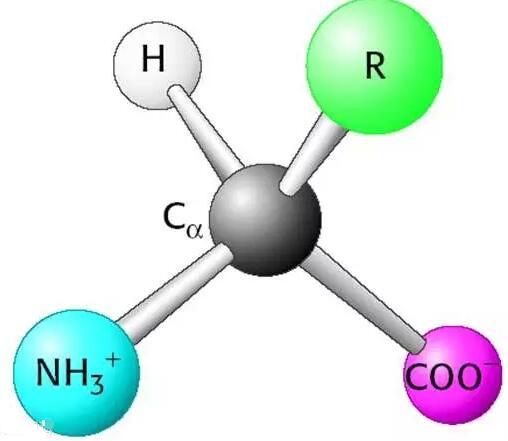Michael O Wellington, Tetske G Hulshof, Jan Wellim Resink, Kristi Ernst, Anke Balemans, Greg I Page
 The present study
investigated the impact of providing different supplemental essential amino
acids (EAA) in a low crude protein (CP) diet on growth performance in weanling
pigs. A total of 324 mixed-sex 24-d weaned piglets
(initial BW 6.9 ± 0.34 kg) were used in a 27-d growth trial with six dietary
treatments immediately post-weaning. The first two treatments were a
control standard CP (19%) diet (positive control; PC) and a negative control
(NC) diet with low CP (16%) and reduced Ile, Leu, and histidine levels. The
rest of the treatments had low CP with varied EAA types and levels; T1 had
similar Ile, Leu, and His levels as PC but with low CP (16%), while T2 had low
CP and 10% higher His, Thr, Trp, and Met+Cys compared to PC. The T3 was a low CP diet with 10% supplemental Leu, Ile,
and Val compared to PC, while T4 was a low CP diet with 10% supplementation
with all the EAA except Lys compared to PC. The initial body weight (BW)
was not statistically different (P > 0.05) among the treatments. Also, on d
6, no statistical differences in BW were observed among the treatments. The
average BW recorded on d 13, 20, and 27 showed significant treatment
differences where the PC had consistently higher BW than all the other
treatments (P < 0.05). The average daily gain (ADG) of the PC was higher
than the rest of the treatments. Between d 13 and 20, the average daily feed
intake (ADFI) for PC was not different from NC and T1 (P > 0.05), but
compared to T2, T3, and T4, the PC treatment showed a high ADFI (P < 0.05). Overall
(d 0–27), the ADFI for PC was not different from T1 and was significantly
higher than all other treatments. Overall, results showed that the gain to feed (G:F) ratio was
higher (P < 0.05) for PC compared to other dietary treatments. In summary,
although the treatments (T1–T4) consisted of varying levels of EAA above the
recommended requirement levels for optimal performance, we did not see a
significant impact on growth performance improvement, which may indicate that
the targeted EAA (His, Val, Thr, lle, Leu, Trp, and Met) may not have been
limiting in these diets. On the other hand, the phenylalanine (Phe) requirement
may be limited in the current formulations, or perhaps the EAA: total N ratio
in T1, T2, T3, and T4 may have been too high, resulting in the inefficiency of
EAA utilization for growth.
The present study
investigated the impact of providing different supplemental essential amino
acids (EAA) in a low crude protein (CP) diet on growth performance in weanling
pigs. A total of 324 mixed-sex 24-d weaned piglets
(initial BW 6.9 ± 0.34 kg) were used in a 27-d growth trial with six dietary
treatments immediately post-weaning. The first two treatments were a
control standard CP (19%) diet (positive control; PC) and a negative control
(NC) diet with low CP (16%) and reduced Ile, Leu, and histidine levels. The
rest of the treatments had low CP with varied EAA types and levels; T1 had
similar Ile, Leu, and His levels as PC but with low CP (16%), while T2 had low
CP and 10% higher His, Thr, Trp, and Met+Cys compared to PC. The T3 was a low CP diet with 10% supplemental Leu, Ile,
and Val compared to PC, while T4 was a low CP diet with 10% supplementation
with all the EAA except Lys compared to PC. The initial body weight (BW)
was not statistically different (P > 0.05) among the treatments. Also, on d
6, no statistical differences in BW were observed among the treatments. The
average BW recorded on d 13, 20, and 27 showed significant treatment
differences where the PC had consistently higher BW than all the other
treatments (P < 0.05). The average daily gain (ADG) of the PC was higher
than the rest of the treatments. Between d 13 and 20, the average daily feed
intake (ADFI) for PC was not different from NC and T1 (P > 0.05), but
compared to T2, T3, and T4, the PC treatment showed a high ADFI (P < 0.05). Overall
(d 0–27), the ADFI for PC was not different from T1 and was significantly
higher than all other treatments. Overall, results showed that the gain to feed (G:F) ratio was
higher (P < 0.05) for PC compared to other dietary treatments. In summary,
although the treatments (T1–T4) consisted of varying levels of EAA above the
recommended requirement levels for optimal performance, we did not see a
significant impact on growth performance improvement, which may indicate that
the targeted EAA (His, Val, Thr, lle, Leu, Trp, and Met) may not have been
limiting in these diets. On the other hand, the phenylalanine (Phe) requirement
may be limited in the current formulations, or perhaps the EAA: total N ratio
in T1, T2, T3, and T4 may have been too high, resulting in the inefficiency of
EAA utilization for growth.
Translational Animal Science, Volume 7, Issue 1, 2023, txad008
https://doi.org/10.1093/tas/txad008
Registration hotline: 021-57634675
fax: 021-57632800
Copy right : 上海亘泰实业集团
Collaboration & Sponsorship: 021-57634938 57631012
ASASHotline:021-67868428
Site Map | CNZZStatistics
address:Shanghai songjiang jiuting town nine new highway 90 lane 3 nine new commercial building 15 floor

WeChat ID:asaschina
The pig nutrition international BBS CSIS